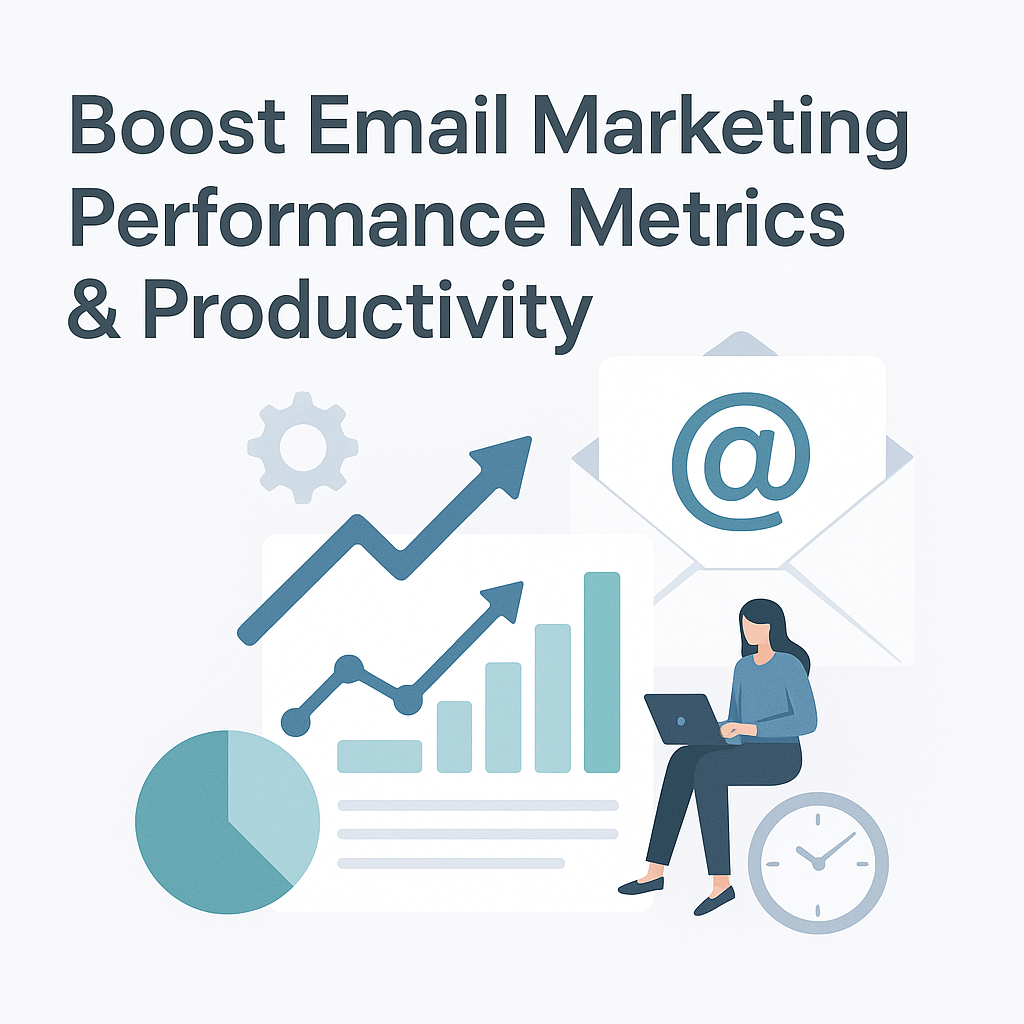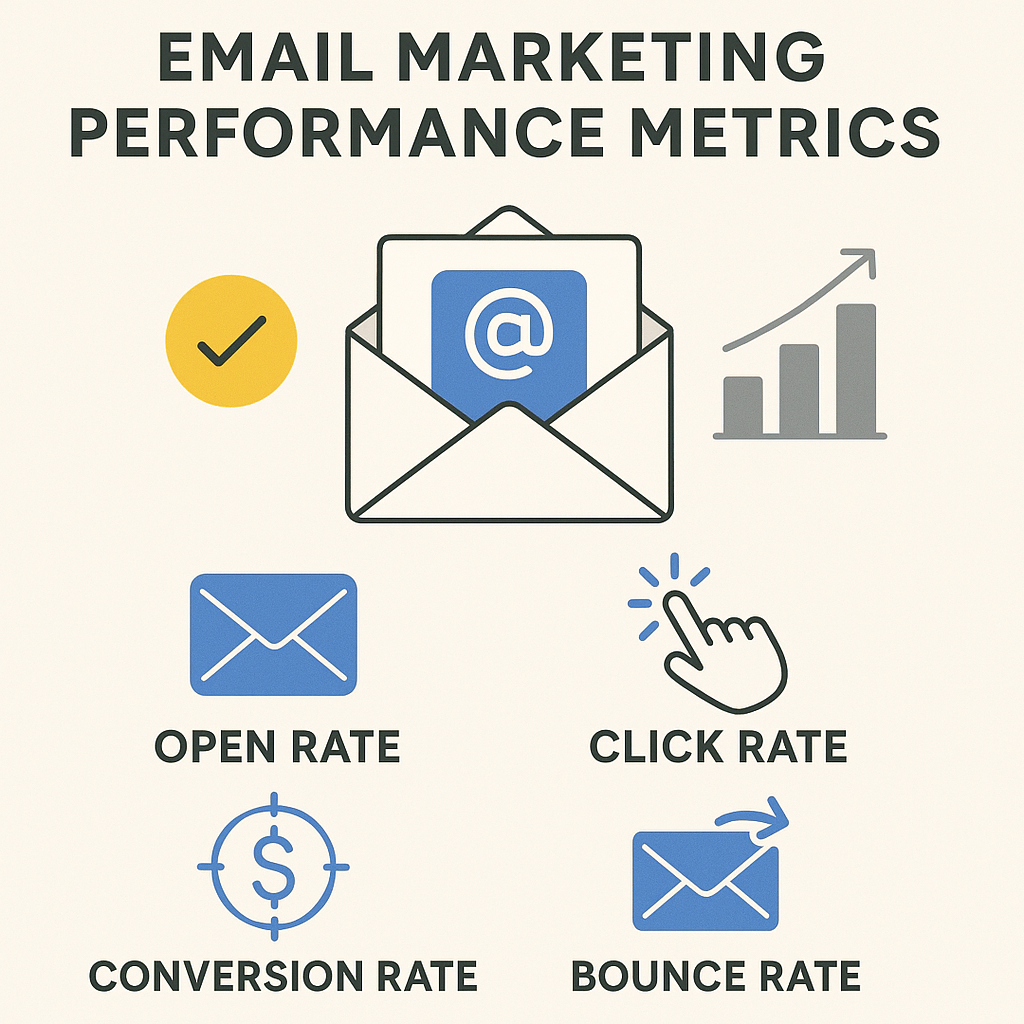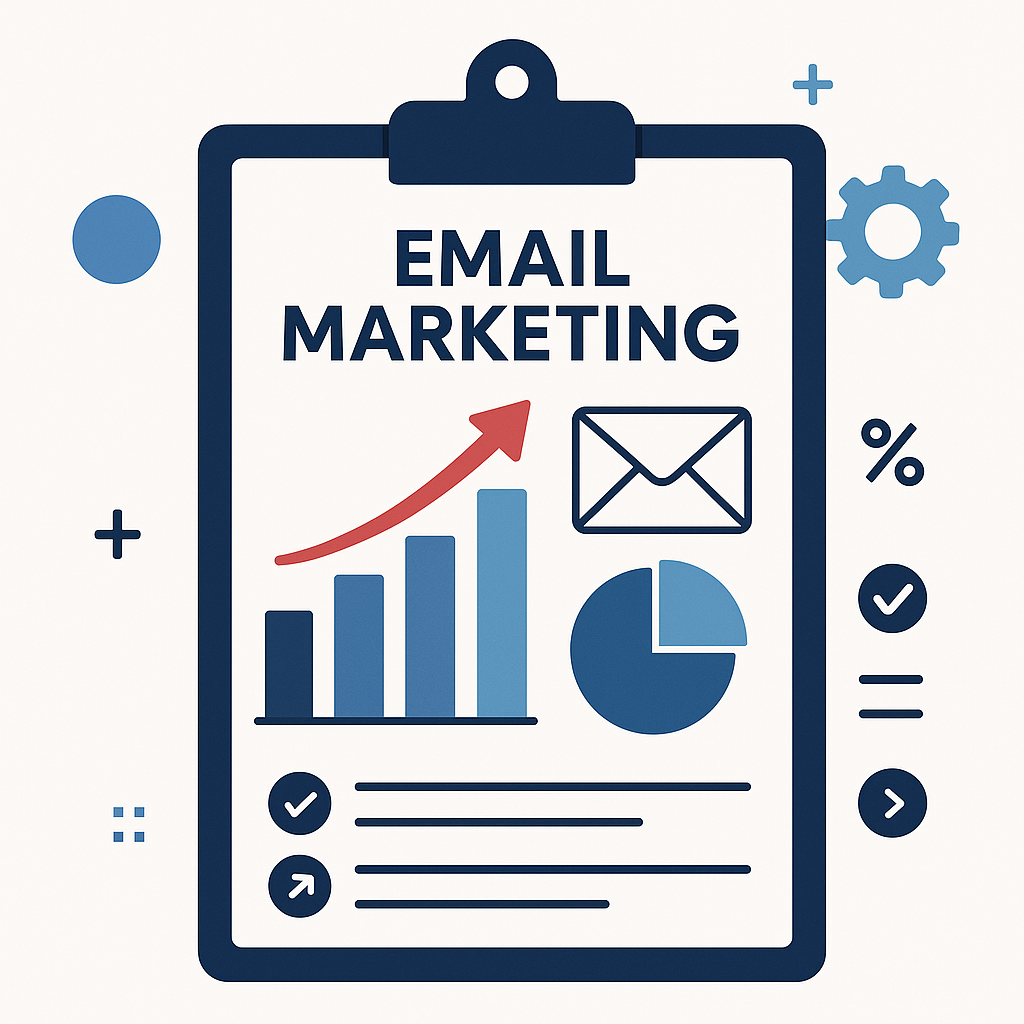Boost Email Marketing Performance Metrics & Productivity

In today's fast-paced digital landscape, email remains a powerhouse for sales and marketing. Yet, for many professionals, the inbox can feel like a battleground, and email campaigns, while sent, don't always hit their mark. The sheer volume of communication, coupled with the need for impactful outreach, can leave you wondering: are my emails actually driving results? More importantly, is my email strategy *productive*? The answer lies not just in sending more emails, but in sending smarter ones, guided by a deep understanding of your email marketing performance metrics.
Understanding the Importance of Email Marketing Metrics for Productivity
It's easy to get lost in the daily grind of drafting, sending, and managing emails. But without a clear view of how your campaigns are performing, you're essentially flying blind. Email marketing performance metrics are your compass and your map. They don't just tell you if an email was opened; they reveal the health of your list, the effectiveness of your messaging, and the overall impact on your business goals. Crucially, understanding these metrics directly translates into enhanced inbox productivity. When you know what works, you spend less time on ineffective tactics and more time on high-impact activities. It's about optimizing your efforts, refining your approach, and ensuring every email counts, freeing up valuable time and mental bandwidth. By adopting sound email analytics best practices, you shift from reactive email management to proactive, data-driven strategy.
Key Metrics to Track: Open Rates and Their Implications
Let's dive into the metrics that matter. First up, the Open Rate.
What is the Open Rate?
This metric represents the percentage of recipients who opened your email after it was successfully delivered. It’s often the first indicator of whether your subject line and sender name are compelling enough to grab attention in a crowded inbox. According to Litmus, tracking open rates helps marketers understand the effectiveness of their subject lines and sender recognition.
What it Tells You:
A strong open rate suggests your subject lines are resonating, your sender reputation is good, and your audience recognizes and trusts your brand. Conversely, a low open rate might signal issues with your subject lines, poor list segmentation, or even problems with your sender reputation. A good open rate is typically between 15-25%, though this can vary significantly by industry.
Actionable Advice:
- Craft Compelling Subject Lines: This is your first impression. Use strong verbs, create curiosity, personalize, and keep it concise. A/B testing different subject lines is crucial for identifying what works best for your audience.
- Optimize Sender Name: Ensure your sender name is recognizable and professional.
- Segment Your Lists: Sending relevant content to specific audience segments often leads to higher open rates than a generic blast.
- Maintain List Hygiene: Regularly clean your list to remove inactive or invalid addresses, which can negatively impact your deliverability and open rates.
Understanding your open rates is a fundamental step in improving your overall email engagement metrics and kickstarting your email campaign optimization process.
Click-Through Rates (CTR): Measuring Engagement and Interest
Opening an email is just the first step; getting recipients to *act* is the next critical phase. This is where the Click-Through Rate (CTR) comes in.
What is the Click-Through Rate (CTR)?
CTR measures the percentage of people who clicked on one or more links within your email, out of the total number of recipients who opened the email. It’s a direct measure of how well your email content and call-to-action (CTA) are driving engagement and interest. Pipedrive highlights CTR as a key performance indicator for gauging how well your email content resonates with your audience.
What it Tells You:
A high CTR indicates that your email content is relevant, valuable, and persuasive. It suggests your messaging is compelling, your CTAs are clear, and your audience is interested in learning more or taking the next step. A low CTR, however, points to potential issues with your content’s appeal, the clarity of your CTAs, or the relevance of your offer to the recipient. Average CTRs often hover around 2-3%, but again, industry and campaign type play a huge role.
Actionable Advice:
- Clear and Prominent CTAs: Make your calls-to-action stand out. Use action-oriented language (e.g., 'Shop Now,' 'Learn More,' 'Download Your Guide') and ensure buttons or links are easily visible and clickable.
- Compelling Content: The body of your email should support the CTA, providing value and building a case for clicking. Tell a story, highlight benefits, or offer solutions.
- Visual Appeal: Use relevant images or graphics to break up text and draw attention to key links.
- Link Placement: Strategically place links where they make sense within the narrative of your email.
- Mobile Optimization: Ensure your emails and linked landing pages are fully responsive and load quickly on mobile devices, as a significant portion of emails are opened on smartphones.
Improving your CTR is vital for driving traffic to your website, generating leads, and ultimately contributing to your email marketing ROI. It's a key indicator for successful email campaign optimization.
Conversion Rates: The Ultimate Measure of Campaign Success
While open rates and click-through rates are important engagement indicators, the ultimate goal of most email marketing efforts is to drive a specific action that benefits your business. This is where conversion rates shine.
What is the Conversion Rate?
The conversion rate measures the percentage of recipients who completed a desired action after interacting with your email. This action could be anything from making a purchase, filling out a form, downloading a resource, signing up for a webinar, or even replying to a sales email. It’s the metric that directly ties your email efforts to tangible business outcomes.
What it Tells You:
A high conversion rate signifies that your email campaign effectively persuaded recipients to take a specific, valuable action. It indicates that your offer, landing page, and the entire user journey are aligned and effective. A low conversion rate suggests a disconnect somewhere in the process – perhaps the offer isn't compelling enough, the landing page is confusing, or the user experience isn't smooth. Conversion rates are the ultimate measure of your email marketing ROI.
Actionable Advice:
- Define Clear Conversion Goals: Before launching a campaign, know exactly what action you want recipients to take and how you will track it.
- Optimize Landing Pages: Ensure the page recipients land on after clicking your email CTA is relevant, user-friendly, loads quickly, and clearly guides them to complete the desired action.
- Personalize the Journey: Tailor the post-click experience based on the email content and the recipient's segment.
- Streamline the Process: Remove any unnecessary steps or friction points that might prevent a user from converting.
- Track and Analyze: Use your email platform and website analytics to track conversions attributed to specific campaigns. This data is invaluable for understanding your email marketing ROI and refining future email campaign optimization efforts. For sales professionals, tracking reply rates or meeting bookings from targeted outreach emails is just as crucial as e-commerce conversions. Mastering your follow-up strategy, for example, can significantly boost these specific conversion metrics. For more on this, check out our guide on Master Sales Follow-Up: Drive Revenue with Smart Emails.
Conversion rates are the true north of your email marketing strategy, reflecting its direct impact on your bottom line.
Unsubscribe Rates: Identifying and Addressing Issues
While you aim for engagement, it's also vital to understand when your communication isn't a good fit for some subscribers. The unsubscribe rate is a critical metric for list health and audience satisfaction.
What is the Unsubscribe Rate?
This metric tracks the percentage of recipients who opt-out of your email list after receiving your messages. It’s a direct signal that your content or communication frequency is no longer meeting their needs or expectations.
What it Tells You:
A rising unsubscribe rate can indicate several issues:
- Content Mismatch: You're sending content that doesn't align with what subscribers initially signed up for or expected.
- Over-Communication: Sending emails too frequently can lead to list fatigue.
- Poor List Segmentation: Sending generic messages to diverse audiences can result in irrelevant content for many.
- Low Perceived Value: Subscribers don't see enough benefit in continuing to receive your emails.
- List Quality: In some cases, a sudden spike might be due to purchased lists or bots, which should be avoided at all costs.
Actionable Advice:
- Review Content Relevance: Ensure your emails consistently deliver value and align with subscriber expectations.
- Offer Preference Centers: Allow subscribers to choose the types of emails they receive or adjust the frequency, rather than opting out entirely.
- Segment Ruthlessly: Use your email engagement metrics to identify less engaged segments and tailor your messaging or frequency accordingly.
- Maintain List Hygiene: Regularly remove inactive subscribers who haven't opened or clicked emails in a long time. This is a key part of email analytics best practices.
- Don't Buy Lists: Always focus on organic list growth and genuine opt-ins.
While some unsubscribes are inevitable, a consistently low unsubscribe rate is a sign of a healthy, engaged audience.
Bounce Rates: Diagnosing Deliverability Problems
Deliverability is the foundation of email marketing. If your emails aren't reaching the inbox, none of the other metrics matter. Bounce rates are your primary indicator of deliverability health.
What is a Bounce Rate?
The bounce rate is the percentage of emails that could not be successfully delivered to the recipient's inbox. There are two main types of bounces:
- Hard Bounces: These are permanent delivery failures, typically due to invalid email addresses (e.g., typos, non-existent domains).
- Soft Bounces: These are temporary delivery failures, often caused by a full inbox, server issues, or temporary blocks by the recipient's email provider.
What it Tells You:
A high bounce rate, especially from hard bounces, is a significant red flag. It indicates poor list hygiene, which can damage your sender reputation with Internet Service Providers (ISPs) and negatively impact your email deliverability. This can lead to your legitimate emails being filtered into spam folders or rejected outright. High bounce rates can also distort your other metrics, making it harder to gauge true engagement. As highlighted by gmass.co, maintaining a low bounce rate is critical for efficient email outreach.
Actionable Advice:
- Remove Hard Bounces Immediately: Your email service provider (ESP) should automatically handle this, but it's crucial to ensure it. Never attempt to re-send to a hard-bounced address.
- Monitor Soft Bounces: While temporary, frequent soft bounces from the same addresses warrant investigation. If an address consistently soft bounces, it may need to be removed.
- Validate Email Addresses: Use email verification tools to clean your list *before* sending campaigns, especially when acquiring new subscribers.
- Maintain List Hygiene: Regularly clean your lists to remove invalid or inactive addresses. This is a fundamental aspect of email analytics best practices.
- Monitor Sender Reputation: Use tools like Google Postmaster Tools or similar services to keep an eye on your sender reputation and identify potential issues.
A low bounce rate is essential for ensuring your messages reach your intended audience, which is the first step in achieving good email engagement metrics and optimizing your email marketing ROI.
How AI-Powered Tools Like MailToPie Enhance Metric Analysis and Productivity
Manually tracking and analyzing all these email marketing performance metrics can be time-consuming and overwhelming, especially for busy sales and marketing professionals. This is where AI for email marketing truly shines, transforming how you approach email campaign optimization and boost inbox productivity. As explored in resources on productivity tools, AI can automate many of the tedious aspects of email management.
AI-powered tools can automate data collection, identify complex patterns, and provide predictive insights that human analysis might miss. They can help you understand not just *what* happened, but *why* it happened, and *what* you should do next. For instance, AI can:
- Automate A/B Testing: Test subject lines, content, and CTAs more efficiently, learning from results to optimize future sends.
- Predictive Analytics: Forecast campaign performance, identify subscribers most likely to engage or convert, and segment your audience more effectively.
- Personalization at Scale: Tailor email content, offers, and send times to individual subscribers based on their behavior and preferences.
- Intelligent List Segmentation: Automatically group subscribers based on engagement levels, interests, or buying behavior, ensuring more targeted and effective campaigns.
- Deliverability Monitoring: AI can help predict potential deliverability issues before they impact your campaigns.
Modern tools, like an ai executive assistant, can significantly enhance your ability to not only track these metrics but also to derive actionable insights, automate repetitive tasks, and optimize your overall email workflow. By integrating with your email communications, such platforms can analyze performance data, suggest content improvements, and even manage follow-up sequences, freeing you from manual analysis and repetitive tasks. This allows you to focus on strategy and high-impact activities, directly improving your inbox productivity and ensuring your email marketing ROI is maximized. Tools like these are becoming indispensable for professionals aiming to master their email outreach and conquer their inboxes. For more on leveraging AI for efficiency, consider exploring how AI Agents Revolutionize Your Email Productivity or how to Reclaim Email Time.
Actionable Insights: Turning Data into Improved Email Strategies
Understanding your email marketing performance metrics is only half the battle; the real power comes from translating that data into actionable strategies that drive results and enhance inbox productivity. Here’s how to turn your analytics into a competitive advantage, following sound email analytics best practices.
1. Segment Your Audience Based on Engagement
Use metrics like open rates, click-through rates, and past purchase history to segment your email list. Shopify's approach to email marketing emphasizes segmentation for better customer engagement.
- Highly Engaged: These subscribers are your champions. Target them with loyalty programs, early access to products, or requests for reviews.
- Moderately Engaged: Keep them warm with valuable content, special offers, and personalized recommendations.
- Less Engaged: Consider re-engagement campaigns or, if they remain inactive, prune them from your list to improve deliverability and focus your resources.
2. Continuously A/B Test
Never stop testing. Use metrics to guide your A/B tests on:
- Subject Lines: Experiment with length, tone, personalization, and emojis.
- Call-to-Actions (CTAs): Test button colors, text, placement, and urgency.
- Email Copy: Try different tones, lengths, and benefit-driven language.
- Send Times/Days: Analyze when your audience is most likely to engage.
3. Refine Your Content Strategy
- If CTRs are low, your content might not be compelling or relevant enough. Focus on value, storytelling, and clear benefits.
- If conversion rates are low, examine your landing pages and the user journey post-click. Ensure a seamless transition from email to action.
- If unsubscribe rates are high, review your content relevance and sending frequency. Consider preference centers.
4. Prioritize List Hygiene and Deliverability
- Regularly clean your list by removing hard bounces and inactive subscribers. This is a cornerstone of email analytics best practices and crucial for maintaining good email deliverability.
- Monitor your sender reputation. A clean list and good sending practices protect your ability to reach your audience.
5. Leverage AI for Deeper Insights
Don't just look at the numbers; understand the story they tell. AI tools can help you uncover correlations, predict trends, and automate optimization processes that would be impossible to manage manually. This allows for smarter email campaign optimization and a significant boost to your overall inbox productivity. By consistently applying these data-driven insights, you'll see tangible improvements in your email marketing performance metrics and a stronger email marketing ROI.
Mastering email marketing performance metrics is not just about achieving better campaign results; it's about enhancing your overall productivity and efficiency. By diligently tracking, analyzing, and acting upon key metrics like open rates, CTRs, conversion rates, unsubscribes, and bounces, you gain invaluable insights into your audience and the effectiveness of your communication. This data-driven approach allows for smarter segmentation, targeted content, and continuous optimization, ensuring your email efforts are impactful and efficient.
Embracing AI for email marketing and tools like an ai executive assistant can further amplify these benefits, automating complex analysis, personalizing at scale, and streamlining your workflow. Ultimately, this leads to less time spent on guesswork and more time dedicated to strategic growth and high-impact activities.
Start today: dive into your analytics, identify areas for improvement, and implement data-backed strategies. Your inbox, your campaigns, and your business will thank you for it.



